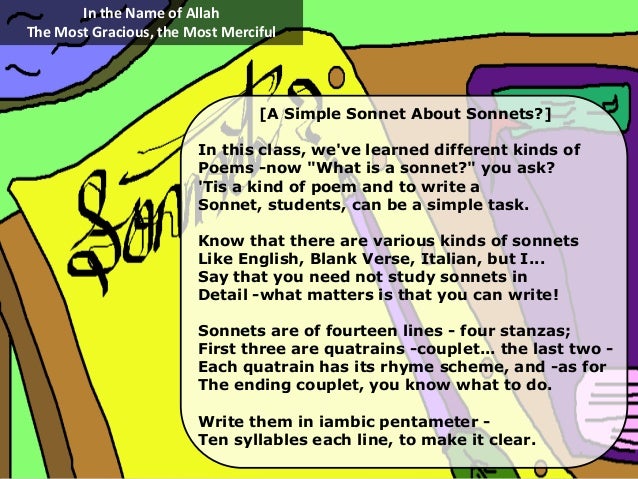
Donne brings death as a metaphysical entity into the physical world as a means of lessening its power over humankind. This sonnet is perhaps the most famous of Donne’s “holy sonnets.” In the sonnet, the poet addresses “Death,” personifying him as a braggart. One short sleepe past, wee wake eternally,Īnd death shall be no more death, thou shalt die. Thou art slave to Fate, Chance, kings, and desperate men,Īnd dost with poyson, warre, and sicknesse dwell,Īnd poppie, or charmes can make us sleepe as well,Īnd better then thy stroake why swell’st thou then?

Rest of their bones, and soules deliverie. Much pleasure, then from thee, much more must flow,Īnd soonest our best men with thee doe goe, Mighty and dreadfull, for, thou art not soe,įor, those, whom thou think’st, thou dost overthrow,ĭie not, poore death, nor yet canst thou kill mee.įrom rest and sleepe, which but thy pictures bee, Common Examples of Sonnet Themesĭeath be not proud, though some have called thee
Curtal Sonnets: Written by Manley Hopkins, these sonnets comprise eleven lines with amendments to Petrarchan standards. Francesco Berni first wrote these poems and popularized them. Caudate Sonnets: These sonnets comprise a total of fourteen lines with a coda. Occitan Sonnets: These sonnets appeared in Italy in the 13 th century with ABABABAB, CDCDCD rhyme scheme and were written for singing. In addition, Miltonic sonnets often address themes of internal struggles and conflict rather than external world themes. Milton used the Petrarchan form as well and expanded the traditional limits of rhyme and length in composing many of his sonnets. Miltonic: Named for the English poet John Milton, this sonnet pattern is considered an evolution of the Shakespearean sonnet.  Spenserian: Named for the English poet Edmund Spenser, a contemporary of William Shakespeare, this sonnet pattern is a variation of the Shakespearean sonnet and features a more challenging rhyme scheme, ABAB BCBC CDCD EE. There are variants in terms of sonnets, but the Italian and English patterns are the two most prevalent. English or Shakespearean Sonnet: Named for William Shakespeare and a variation of the Italian sonnet, this sonnet pattern consists of three four-line Quatrains and a concluding couplet with the rhyme scheme ABAB CDCD EFEF GG.
Spenserian: Named for the English poet Edmund Spenser, a contemporary of William Shakespeare, this sonnet pattern is a variation of the Shakespearean sonnet and features a more challenging rhyme scheme, ABAB BCBC CDCD EE. There are variants in terms of sonnets, but the Italian and English patterns are the two most prevalent. English or Shakespearean Sonnet: Named for William Shakespeare and a variation of the Italian sonnet, this sonnet pattern consists of three four-line Quatrains and a concluding couplet with the rhyme scheme ABAB CDCD EFEF GG. 
Italian or Petrarchan Sonnet: Named for the Italian Renaissance lyrical poet Francesco Petrarch, this sonnet pattern consists of an eight-line Octave with the rhyme scheme ABBA ABBA, followed by a six-line Sestet that follows one of two rhyme schemes, CDE CDE or CDC CDC.In English literature, there are two basic sonnet patterns:







 0 kommentar(er)
0 kommentar(er)
